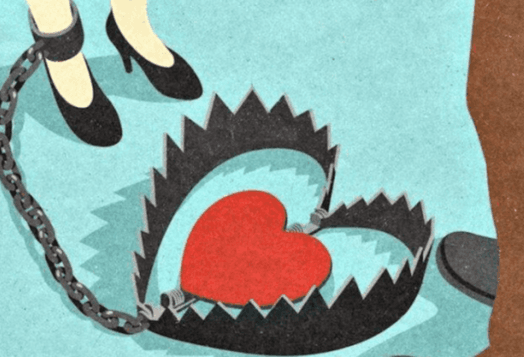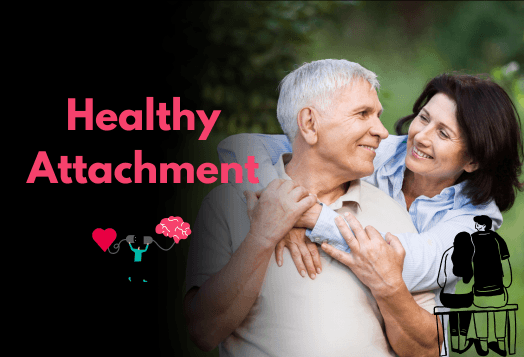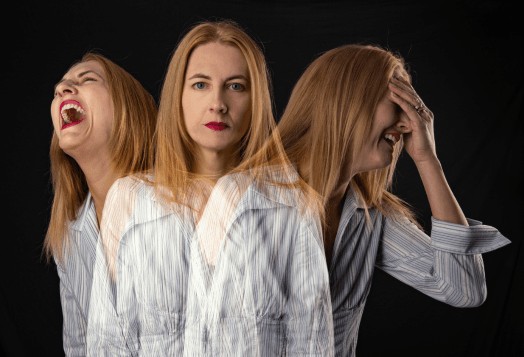We all form emotional attachments; some light and fleeting, others deep and consuming. In close relationships, emotional attachments can either uplift your mental health or slowly wear it down. Learning to distinguish between what’s healthy and what’s harmful is the key to stronger, more balanced relationships.

What Are Emotional Attachments?
Emotional attachments are the bonds we form with people we care about. These connections can feel comforting, secure, and grounding, until they’re not. At their best, emotional attachments help us feel seen, loved, and supported. At their worst, they lead to emotional dependency, anxiety, and even loss of self.
Understanding emotional attachment in personal relationships starts with spotting what’s going on beneath the surface.
Healthy Emotional Attachments: The Emotional Glue That Holds Us Together

A healthy emotional attachment is like a cosy blanket—warm, secure, and never suffocating. It's based on trust, emotional safety, and mutual respect.
Common Healthy Emotional Attachment Signs:
You feel secure whether you're together or apart.
You can express emotions without fear of judgment.
Both of you support each other’s growth and independence.
You set and respect emotional boundaries.
These signs reflect emotional intelligence and balanced emotional connection. A secure attachment helps you flourish as individuals while still being deeply connected.
Why It Matters for Your Mental Health
Healthy emotional attachments reduce stress, improve communication, and boost self-esteem. They make space for emotional independence while nurturing a connection that’s consistent and supportive.
If you're uncertain about the emotional attachment signs in your relationship, speaking with a relationship therapist or emotional intelligence coach can help clarify things.
Unhealthy Emotional Attachments: When Closeness Turns Toxic

Not all attachments feel safe, even when they appear loving on the surface. Unhealthy emotional attachments often involve quiet compromises; when you edit your thoughts, soften your needs, or shrink your presence just to avoid rocking the boat.
Emotional Attachment Signs That Signal Trouble:
You constantly need reassurance and validation.
Your self-worth depends on the other person’s approval.
- You feel anxious or panicked when they’re not around, a sign that may also relate to feeling emotionally detached.
You’re overly fixated on the relationship, ignoring your own needs.
These are red flags of extreme emotional attachment, where closeness turns into obsession or emotional dependence.
Why Extreme Emotional Attachment Drains You
Extreme emotional attachment often comes with fear of abandonment, emotional instability, and possessiveness. Over time, these patterns lead to stress, anxiety, and emotional burnout. You may even lose sight of who you are outside the relationship.
If any of these emotional attachment signs resonate with you, it's time to pause and reflect.
How to Build Healthy Emotional Attachments That Last
Rewiring your emotional habits starts with self-awareness. Whether it's with family, friends, or partners, learning to build healthy emotional attachment in relationships is one of the best gifts you can give yourself.
1. Know Your Emotional Patterns
Before you change anything, take a closer look at how you behave in relationships. Do you get clingy? Shut down emotionally? Recognising emotional attachment signs early helps you avoid slipping into unhealthy patterns.
2. Set and Respect Boundaries
Boundaries are not barriers—they’re bridges. They allow trust and respect to grow. Boundaries ensure that your emotional space is honoured and that the relationship doesn’t feel like a pressure cooker.
3. Build Emotional Trust
Healthy attachments grow through consistent, safe, and honest communication. Trust is the foundation. Without it, even the healthiest bond will feel shaky.
4. Encourage Individual Growth
A strong connection doesn’t require constant closeness. Supporting each other’s interests and independence strengthens the bond and protects against extreme emotional attachment.
How to Get Rid of Unhealthy Attachment (Without Breaking Down)
Letting go of toxic emotional patterns is hard. But learning how to get rid of unhealthy attachment can be the difference between constant emotional chaos and true peace.
Step 1: Identify the Attachment
The first step is recognising you’re stuck. Do you feel emotionally exhausted? Afraid to be alone? Controlled by someone else’s moods? These are classic emotional attachment signs that point to something unhealthy.
Step 2: Reflect and Accept
Acknowledge your part in the dynamic, not to blame yourself, but to reclaim control. A therapist can help you explore childhood patterns, relationship history, and unresolved wounds that may be feeding your extreme emotional attachment.
Step 3: Create Distance and Rediscover Yourself
Detaching doesn’t mean disappearing; it means shifting your focus inward. Journaling, taking up old hobbies, or spending time with people who uplift you can help reestablish your emotional independence.
Step 4: Seek Ongoing Support
Don’t underestimate the value of therapeutic support. Whether you’re navigating a breakup or trying to reset the emotional tone of your relationships, therapy provides structure, insight, and compassion.
Extreme Emotional Attachment: When It’s More Than Just “Love”
Let’s talk about extreme emotional attachment a little more, because it often hides behind what we think is love. But this kind of attachment can feel obsessive, all-consuming, and deeply unbalanced.
You may:
Feel threatened by your partner’s independence.
Use emotional manipulation to keep them close.
Lose touch with your own identity or interests.
Ignore red flags just to maintain the bond.
These patterns don’t just affect romantic relationships; they show up with friends, family, and even co-workers. If you're constantly anxious, jealous, or afraid of being replaced, you're likely dealing with extreme emotional attachment.
Emotional Attachments Should Nourish, Not Exhaust You
There’s nothing wrong with being emotionally connected to someone. In fact, it’s a beautiful part of being human. But it becomes harmful when emotional attachments become your only source of self-worth, safety, or happiness.
By learning to spot emotional attachment signs, setting healthy boundaries, and reaching out for support, you can build connections that feel empowering, not exhausting.
If you’re wondering how to get rid of unhealthy attachment or you’ve noticed you lean toward extreme emotional attachment, you’re not broken; you’re just in need of a reset. And healing is possible.




